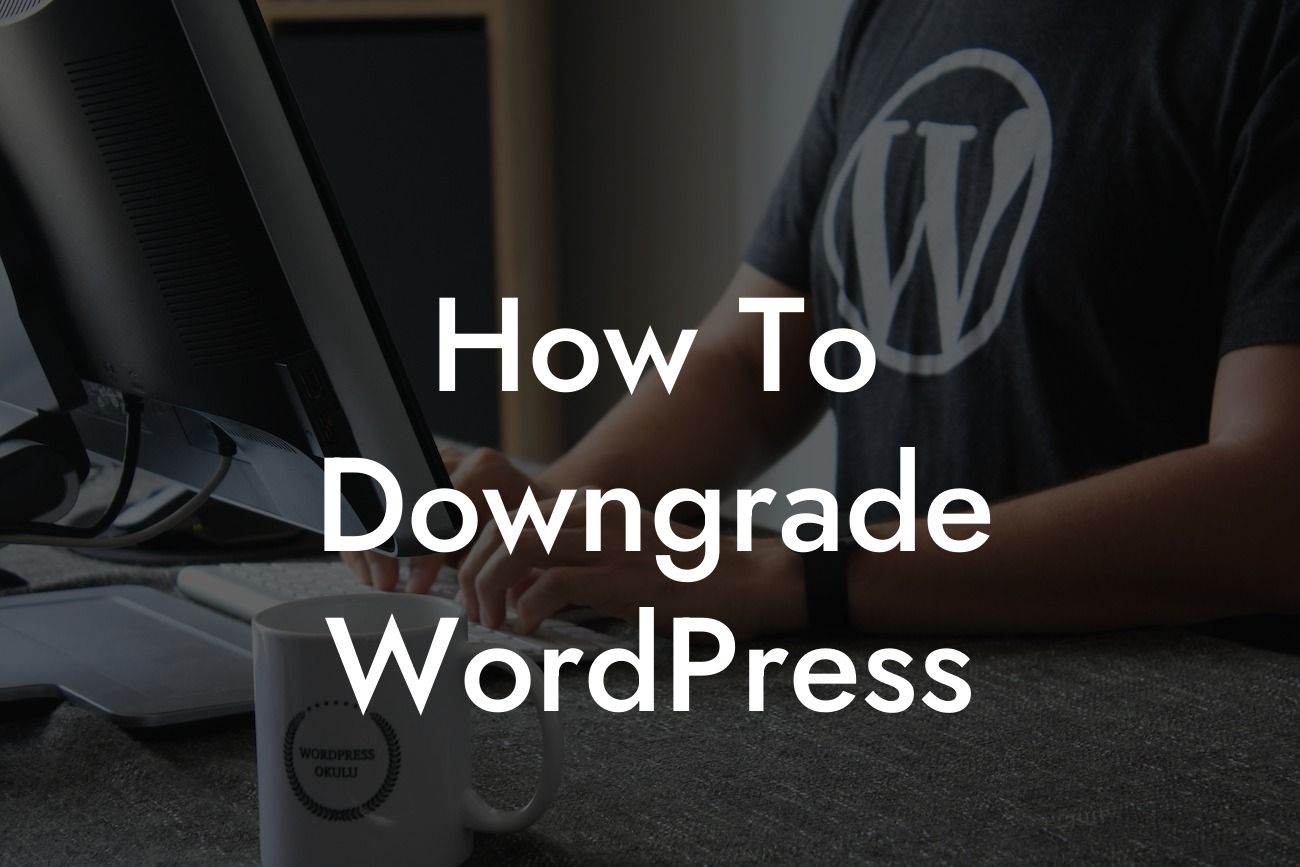Upgrading to the latest version of WordPress is essential to benefit from new features, security enhancements, and bug fixes. However, there may be instances where you need to downgrade WordPress for various reasons. Whether you encountered compatibility issues with certain plugins or themes, or you simply preferred the previous version's layout, this comprehensive guide will walk you through the process of downgrading WordPress without any hiccups.
Downgrading WordPress may seem challenging, but with the right knowledge and tools, you'll be able to revert to a previous version effortlessly. Let's break it down into simple and easy-to-follow steps:
1. Back up your website: Before proceeding with any changes, it's crucial to create a complete backup of your website. This ensures that if any issues occur during the downgrade process, you can restore everything to its original state.
2. Identify the desired version: Decide on the specific WordPress version you want to downgrade to. Visit the official WordPress release archives, where you can find a comprehensive list of all past versions. Select the most suitable one for your needs.
3. Deactivate plugins: Disable all plugins currently active on your WordPress site. Some plugins may not be fully compatible with the older version you're downgrading to, so it's essential to deactivate all of them temporarily.
Looking For a Custom QuickBook Integration?
4. Set up a testing environment: It's a good practice to create a staging environment where you can test the downgraded version before making any changes to your live site. Use a WordPress staging plugin or set up a local development environment, ensuring your live site remains unaffected until you're confident with the changes.
5. Download the older WordPress version: Once you've chosen the version you want to downgrade to, download it from the WordPress release archives. Unzip the downloaded file on your local machine.
6. Replace files: Connect to your website using FTP or through your hosting provider's file manager. Navigate to the root directory of your WordPress installation. Replace the following files and folders with the corresponding ones from the unzipped WordPress version: wp-admin, wp-includes, and all the files in the root directory except wp-config.php.
7. Run the update script: Visit your WordPress site's admin area. Due to the file changes in the previous step, WordPress will automatically recognize the downgrade and prompt you to run the update script. Click on the button to initiate the downgrade process.
8. Reactivate plugins: Once the downgrade is complete, reactivate your plugins one by one, checking for compatibility issues with the downgraded version. Some plugins may require updates to function correctly with the older WordPress version.
How To Downgrade Wordpress Example:
Let's consider a realistic example to better understand the process of downgrading WordPress. Say you recently updated to the latest WordPress version and discovered that certain customizations made to your theme are no longer compatible. You decide to downgrade to the previous version, which supported all the modifications. By following the steps outlined above, you can safely revert to the older version, ensuring your website regains its previous appearance and functionality.
Congratulations! You've successfully learned how to downgrade your WordPress site to a previous version. Remember to regularly check for plugin and theme updates to maintain a secure and optimized website. For more insightful guides and tools to elevate your online presence, explore DamnWoo's collection of powerful plugins. Try one today and witness the extraordinary difference it can make in your small business or entrepreneurial journey. Don't forget to share this article with others who may benefit from this valuable information.













